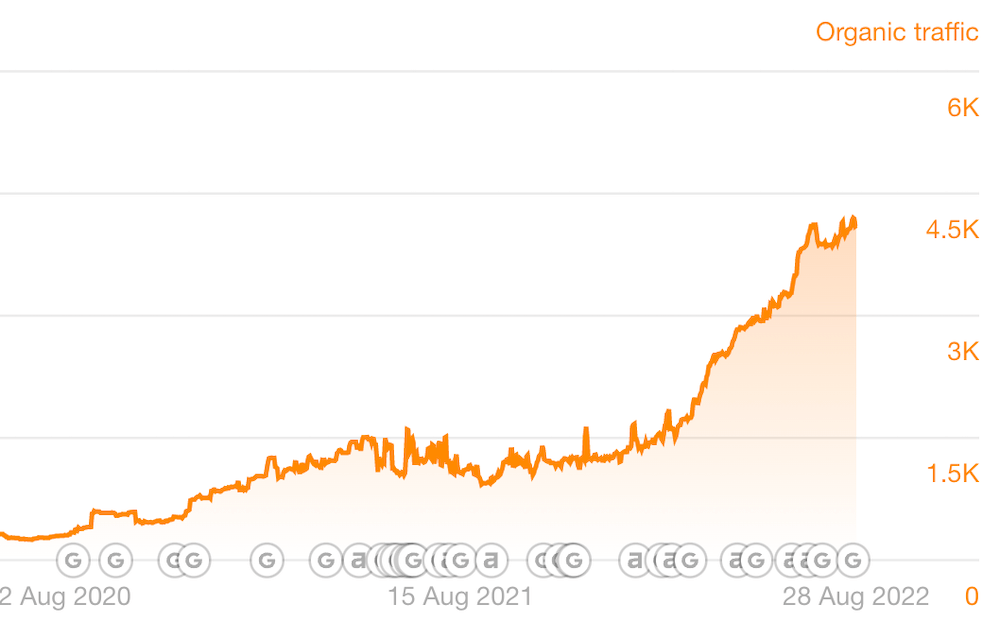Toxic backlinks are links from sites that can weaken your website’s SEO. Weaker SEO means fewer organic visitors.
Fewer organic visitors can mean fewer leads for your sales team.
Toxic backlinks can happen organically, or they can be the result of previous less-than-white-hat backlinking efforts.
What Makes a Backlink Toxic?
Many factors can increase the toxicity of a backlink. Here are just a few.
Mirror Pages
This can be multiple equal pages on different domains linking to your site. If a domain has backlinks from too many other pages to your site with the exact anchor text, these can also be seen as mirror pages.
Low Domain Power
This means that the Trust Score to Domain Score ratio is very low. The Trust Score is based on the number of backlinks from trusted sites pointing to the domain. The Domain Score is the importance of a domain and is calculated similarly to Google Pagerank. A low ratio means the site’s Domain Score may have been artificially inflated.
Paid Links
Google writes that paid links “can negatively impact a site’s ranking in search results.” Some paid backlinks are evident to humans and Google, such as out-of-context, single-word anchor text links to a website’s homepage. A concurrent sign can be a Domain Rating of at least 45 and no domain organic traffic.
Poor Layout
The ratio of visible text content compared to HTML is low.
Update: According to a Twitter analysis by Alex Buraks, the 2023 Yandex Leak revealed that the ratio of “good” to “bad” backlinks is a ranking factor (many in the industry have speculated that the Yandex algorithm is similar to Google’s).
Discovering Toxic Backlinks
Several tools are available for discovering which of your backlinks are toxic. SEMrush has a Backlink Audit tool.
SEMrush collects its own data but can pull a more comprehensive set of backlinks if connected to Google Search Console. Connecting to Google Search Console is easy.

SEMrush’s tool ranks the toxicity of backlinks on a scale of 1 to 100. SEMrush considers backlinks with a Toxic Score between 0 and 44 Non-Toxic. A score of 45 to 59 is Potentially Toxic. 60 and over is Toxic.
Remediating Toxic Backlinks
If you can reach the webmaster of a site with one or more toxic backlinks to your site, contacting that site’s webmaster and requesting the removal of the links is generally recommended as the first level of remediation.
For many sites, reaching the webmaster is impossible. In that case, you can export a file of selected toxic backlinks and submit it to the Google Disavow Tool.
Google cautions against using the disavow tool and recommends “that you disavow backlinks only if you believe you have a considerable number of spammy, artificial, or low-quality links pointing to your site and if you are confident that the links are causing issues for you.”
What used to be an intimidating process has become much easier thanks to improvements in offerings from vendors such as SEMrush.
However, you should carefully consider what action to take on the reported toxic backlinks.


